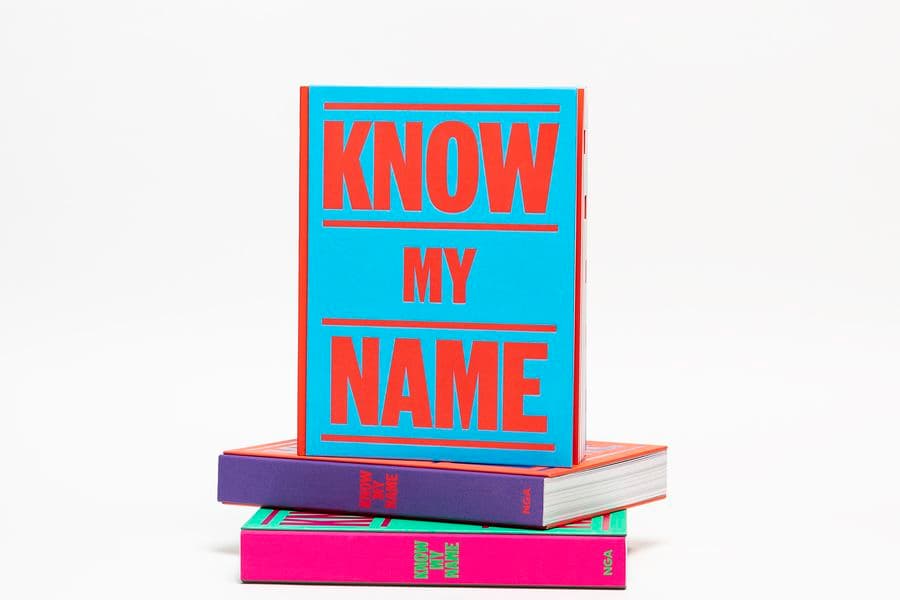Savanhdary Vongpoothorn
born 1971 Champasak, Laos, arrived Gadigal Country / Sydney 1979Savanhdary Vongpoothorn by Bronwyn Campbell
Excerpted from the Know My Name publication (2020).
From a distance the surface of Savanhdary Vongpoothorn’s Various levels 2002 is reminiscent of a patchwork quilt or an aerial view of an agricultural landscape. On approach, the multicoloured rectangles interlocking across the canvas resolve into grids of painted lines anchored by tiny blobs of red, yellow or blue paint resembling pinheads. Each of these seals a small perforation made with a soldering iron; pushing through from the back, these tiny, evenly spaced peaks of canvas and paint create a rough surface texture. The paint is applied in many layers, and combines with the perforations and darker points of colour where the grids intersect to create a shifting and tantalisingly enigmatic effect.
Created after a residency in Japan, the painting refers to the bright and colourful lights of the Tokyo streets.(1) The crossing lines, however, are evocative of the warp and weft threads that form the basic structure of a woven cloth, enlivened by the constantly changing colour combinations and textures. This seamless uniting of disparate elements—in this case the ultra‑modern cityscape and the ancient art of weaving—is a key feature of Vongpoothorn’s oeuvre. Fleeing Laos in the years after the 1975 Communist revolution, Vongpoothorn and her family arrived in Australia when she was eight years old. Her work articulates a confident balance of her heritage, her experience as a Lao Australian and the connections she makes with other cultures and artistic traditions as she lives and travels abroad. While it’s easy to make out the recognisably Asian motifs and characters that often mark the surfaces of her work, it’s important also to acknowledge the role that western art has played in the suite of influences Vongpoothorn draws upon: the grids and perforated canvases, for instance, have direct ancestry in minimalism.(2)
The textural quality of Vongpoothorn’s work, its meticulous and painstaking creation and the meaning she often hides in text indecipherable to most viewers, evokes specific connections to the centuries‑old tradition of Lao weaving. These intricately woven textiles are colourful, densely patterned and embedded with powerful symbolism, often deliberately obscured by the weaver. The connection is not accidental, and Vongpoothorn’s work was displayed with such textiles in one of her earliest exhibitions. In a 2016 interview, she described her increasingly deep engagement with her heritage as partly driven by a compulsion to ensure that her family’s past is part of its future:
My mother and father are experienced and knowledgeable elders … I don’t want my parents to die not knowing who is going to continue with our tradition. I will be the one to continue with our culture and religious tradition.(3)
Inheritance in Lao culture is through the female line. Vongpoothorn’s work not only makes manifest her birthright as a Lao woman, but also reflects her Australian life and the cosmopolitan influences of her engagements with artistic traditions around the world.
(1) Ashley Carruthers, ‘The art of Savanhdary Vongpoothorn as Metissage’, in Bindi dot tartan zen, Niagara Publishing, Richmond, 2002, p 6.
(2) Discussed in Terence Maloon’s foreword in Chaitanya Sambrani, Savanhdary Vongpoothorn: All that arises, ANU Drill Hall Gallery, Canberra, 2019, pp 10–12.
(3) Kon Gouriotis, ‘Savanhdary Vongpoothorn’, Artist Profile, issue 37, 2016, np.
Citation: Cite this excerpt as: Campbell, Bronwyn. "Savanhdary Vongpoothorn" in N Bullock, K Cole, D Hart & E Pitt (eds), Know My Name, National Gallery of Australia, Canberra, 2020, pp 358–359.
BRONWYN CAMPBELL is is Provenance Manager, National Gallery of Australia, Canberra.
//know-my-name/media/dd/images/64184.ba24299.jpg)
